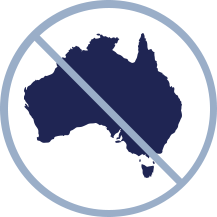The Australian Government has recently introduced tax incentives for early stage investors.
The incentives have been introduced as the new Division 360 of the Income Tax Assessment Act 1997 entitled “Early Stage Investments in Innovation Companies”.
The incentives apply from 1 July 2016 onwards.
The Tax Incentives mean that investors in a qualifying Early Stage Innovation Company (ESIC) will received a tax offset (a reduction in tax) in the amount of 20% of their investment.
A capital gains tax exemption is also available for investors or investors who hold the relevant shares for at least 12 months.
The Tax Offset
The tax offset means that a person who invests say $100,000 in a qualifying innovation company, will received a $20,000 tax offset (meaning a reduction in tax) for the year of their investment.
The tax offset for the investor is capped at $200,000 meaning that investments above $1M will not attract any further tax offsets.
The tax offset is non refundable, meaning that if an investor does not have a tax liability in the year they make the investment they will not receive any benefit. However, the benefit can be carried forward and claimed in the next year when the investor has a tax liability.
Who Can Claim the Tax Offset?
The offset is generally claimable by all natural persons provided they are considered sophisticated investors under section 708 of the Corporations Act.
If the person is not considered a ‘sophisticated investor’ they are only able to benefit from the tax offset if not more than $50,000 was invested by them. Investors can be either be resident or non resident of Australia.
The offset is also available to investors who are are beneficiaries of trusts to the extent that the relevant trust would have been entitled to a tax offset if it was an individual. This would mean that trusts that would need to satisfy the ‘sophisticated investor’ criteria, like an individual would, if it is seeking to invest more than $50,000 into an ESIC.
The tax incentives were announced as part of the National Innovation and Science Agenda. The new laws which were introduced as part of the Tax Laws Amendment (Tax Incentives for Innovation) Bill 2016, received Royal Assent on 5 May 2016.
The Capital Gains Tax Concessions
Essentially investor who qualify for tax incentives will receive a capital gains tax exemption on gains arising from their investment provided they hold the investor for at least 12 months and no longer than 10 years.
Where the investment is held for longer than 10 years the CGT rules provide for a deemed acquisition of the investment for CGT purposes on the 10 year anniversary of the investment for the market value of the interest on that day. That means that investors will receive the benefit of the CGT exemption for accrued gains up to 10 years.
Note that investors receive no CGT concessions for any short term gains made within 12 months.
What is a Qualifying Early Stage Innovation Company (ESIC)
Section 360-40 defines an Early State Innovation Company (ESIC). Essentially a company is an ESIC if it can satisfy all the limbs of that section. The two main limbs are the if it can show that it is:
(i) Early Stage
(ii) Innovative
Is a company Early Stage?
Generally, a company is early stage if either it is incorporated in Australia within the last 3 years or it can have been incorporate in the last 6 years if its total expenses over the last 3 years have been not more than $1,000,000.
Is a company Innovative?
Companies will qualify as innovative they can:
• Earn at least 100 points against the objective tests set
out in section 360-45;
• Self-assess their circumstances against the principles based
test; or
• Seek a ruling from the Commissioner about whether their
circumstances satisfy the principles based test.
The 100 Points Innovation Test
Under 360-45 a company can calculate whether it can get to ‘100 points’ by checking whether it has satisfied certain explicit innovation criteria.
These are set out in Appendix A to this document.
The Principles Based Test
A company will need to show that, it is
(i) the company is genuinely focussed on developing for
commercialisation one or more new, or significantly
improved, products, processes, services or marketing or
organisational methods; and
(ii) the business relating to those products, processes, services
or methods has a high growth potential; and
(iii) the company can demonstrate that it has the potential
to be able to successfully scale that business; and
(iv) the company can demonstrate that it has the potential to
be able to address a broader than local market, including
global markets, through that business; and
(v) the company can demonstrate that it has the potential to
be able to have competitive advantages for that business.
100 point innovation test
At a particular time (the test time) in an income year (the current year), a company has the points mentioned in an item of the following table if that item applies to the company at that time.
Innovation points potentially available at that time in the current year
| Column 1 | Column 2 | |
| Items | Points | Innovation Criteria |
| 1 | 75 | At least 50% of the company’s total expenses for the previous income year is expenditure that the company can notionally deduct for that income year under section 355-205 (about R&D expenditure). |
| 2 | 75 | The company has received an Accelerating Commercialisation Grant under the program administered by the Commonwealth known as the Entrepreneurs’ Programme. |
| 3 | 50 | At least 15%, but less than 50%, of the company’s total expenses for the previous income year is expenditure that the company can notionally deduct for that income year under section 355-205(about R&D expenditure). |
| 4 | 50 | (a) the company has completed or is undertaking an accelerator program that:
(i) provides time-limited support for entrepreneurs with start-up businesses; and (ii) is provided to entrepreneurs that are selected in an open, independent and competitive manner; and (b) the entity providing that program has been providing that, or other accelerator programs for entrepreneurs, for at least 6 months; and (c) such programs have been completed by at least one cohort of entrepreneurs. |
| 5 | 50 | (a) a total of at least $50,000 has been paid for *equity interests that are *shares in the company; and
(b) the company issued those shares to one or more entities that: (i) were not *associates of the company immediately before the issue of those shares; and (ii) did not *acquire those shares primarily to assist another entity become entitled to a *tax offset or a modified CGT treatment) under this Subdivision; and (c) the company issued those shares at least one day before the test time. |
| 6 | 50 | (a) the company has rights (including equitable rights) under a *Commonwealth law as:
(i) the patentee, or a licensee, of a standard patent; or (ii) the owner, or a licensee, of a plant breeder’s right; granted in Australia within the last 5 years (ending at the test time); or (b) the company has equivalent rights under a *foreign law. |
| 7 | 25 | Unless item 6 applies to the company at the test time:
(a) the company has rights (including equitable rights) under a *Commonwealth law as: (i) the patentee, or a licensee, of an innovation patent granted and certified in Australia; or (ii) the owner, or a licensee, of a registered design registered in Australia; within the last 5 years (ending at the test time); or (b) the company has equivalent rights under a *foreign law. |
| 8 | 25 | The company has a written agreement with:
(a) an institution or body listed in Schedule 1 to the Higher Education Funding Act 1988(about institutions or bodies eligible for special research assistance); or (b) an entity registered under section 29A of the Industry Research and Development Act 1986 (about research service providers); to co-develop and commercialise a new, or significantly improved, product, process, service or marketing or organisational method. |
Please contact me on matthew.marcarian@csttax.com for more information on how the new incentives might apply to your situation.



